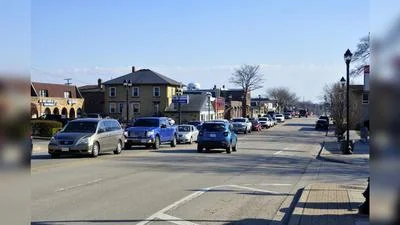Illinois residents are being slammed by ever-rising taxes, from a tax on soda pop in Cook County to a citywide tax increase of 0.5 percent in Danville.
With an average combined tax rate of 8.64 percent, Illinois residents carry the highest sales tax burden in the Midwest and seventh-highest in the nation.
The Illinois Policy Institute pointed out the inequity of sales taxes in a recent article. Low-income residents can ill afford any additional taxes, while middle-income residents get hit from all sides -- higher sales taxes, increased property taxes and a variety of fees for services.
"Sales taxes are fundamentally regressive and hurt lower-income residents the most," the Illinois Policy Institute's Brendan Bakala wrote. "And like property taxes, sales taxes also hurt middle-class people, making everything from a trip to the grocery store to holiday shopping more expensive. Yet, tone-deaf local governments in Illinois don’t seem to care; despite the harm that sales taxes inflict on lower-income residents, 20 separate units of local government in Illinois raised sales taxes at the start of 2017."
The Tax Foundation recently released the latest nationwide data on sales taxes. The combined tax rate is higher in Illinois than in notoriously expensive California and New York, at 8.64 percent vs. 8.25 and 8.49 percent, respectively. Adjoining states' rates range from 5.42 percent in Wisconsin to 7.89 percent in Missouri.
While Illinois' state tax rate is only 6.25 percent, 13th in the nation, local taxes push the combined sales tax rate up. When local governments need to fill the gap between revenues and expenditures, they look to local sales taxes and property taxes to increase revenues. From taxing soda pop to plastic bags to everything sold within the city limits, local municipalities look to residents for revenue.
In addition to the sales tax, Illinois residents pay the highest property taxes in the nation. The 2.67 percent property tax rate is double the national median. Longtime homeowners are finding rising property taxes are outstripping their mortgage payments.
“We’re being taxed out of our home,” Cassandra Bajaks told the Illinois Policy Institute in a 2016 article. “It’s basically like we’re renting our home from the government. [The rate] is well over 4 percent of what the house is worth. The only reason we would ever leave our home or this state is property taxes, and that’s what’s going to happen.”
Like the Bajak family, who planned to move to Florida within a couple of years, Illinois homeowners and workers are leaving the state at an increasing rate. A Paul Simon Public Policy Institute poll cited high taxes as the main reason adult residents want to leave the state. Weather and better employment and educational opportunities were also cited, but at a much lower rate.
Illinois residents are not just thinking about leaving; they've been moving to warmer, cheaper and more business-friendly states for more than a decade. Between July 2015 and July 2016, Illinois saw a net loss of more than 114,000 residents due to out-migration.
High taxes in Illinois are actually eroding the tax base as workers leave for greener pastures. When workers leave the state, they take their income and tax dollars with them. The vicious cycle escalates as tax revenues drop, governmental budgets increase and entities from the smallest municipality up to the state level find new ways to nickel and dime Illinois residents.
As the Illinois Policy Institute pointed out, there is a limit to the amount of taxes that residents can pay. Instead of continuing to raise taxes to pay the bills, politicians should look at ways to cut costs and reduce the tax burden on Illinois taxpayers.






 Alerts Sign-up
Alerts Sign-up